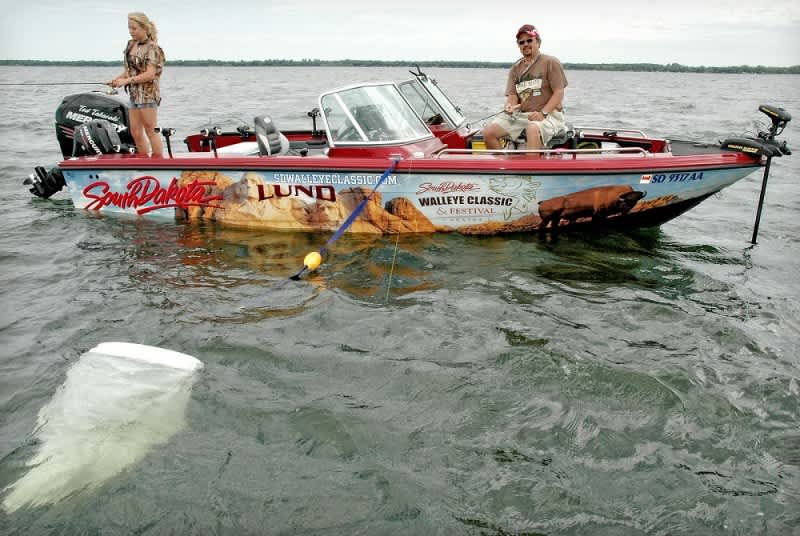Wind is Your Friend
Mark Strand 08.13.14

A walleye never feels the breeze on its face. But rest assured, he loves the wind.
That’s a fact too few anglers take into account—walleyes respond positively to changes in wind direction.
How many of you pull behind the nearest island or the downwind side of a point when the wind blows? Trying to present bait precisely while buffeted by strong winds can be a monumental task. Serious problems with effective boat control can result.
But, haven’t you wondered why the bite died on a spot when the only apparent change from the last time you were there is the way the wind blows?
Walleyes follow food and the location of the most active feeding can change overnight with a change in the direction of the wind. That’s because plankton, the tiny microscopic animals at the bottom of the food chain, are blown mercilessly by the wind. Baitfish follow the wind to eat the plankton. Walleyes and other gamefish are close behind.
A steady wind in one direction over the course of a day or two is bound to ignite the fish on structure located on the windward side of a lake. Even a sudden strong wind can turn on action on reefs, points, and islands because wind is an ally to walleyes in two other ways. Waves break up light penetration and stirs up the bottom to create a mud line. That gives walleyes an advantage when invading the shallows in search of an easy, quick meal using their keen eyesight and developed lateral lines.
For those reasons, anglers must learn to put up with a little discomfort and factor in the wind as a way to locate actively-feeding walleyes.
Good equipment is a must. The first and most important tool is a boat that can handle big waves and wind, like the boats from Lund. These boats have been designed to allow the boat to drift perpendicular to the wind, thus allowing you to spread your lines across the gunnels of the boat and fish different depths.
If you plan to fish big water, consider having two bilge pumps installed. Be sure to have all the required safety equipment on board. Means of boat control are critical. Make certain your trolling motor and gasoline kicker motor are powerful enough to handle the task.
Add two good anchors and plenty of rope. Or, add a MinnKota Talon shallow water anchor to your boat. With a press of a button, this device sends a pole down to the bottom and anchors your boat in one place. Combine this with a regular anchor and your boat won’t move. Two drift socks are also a plus.
Start by using what you know about walleye location during the time of the year you are fishing. Are they near spawning flats in spring? Are they holding deeper on breaklines? Where have trollers been taking them near structure?
Next, look at the lake and find the nearest points, islands, and reefs that are taking a pounding by the wind.
Try anchoring to avoid spooking fish and maintain control if wind speed is extreme, wave action is heavy, or when targeting the shallows. Fan cast crankbaits in order to probe the structure quickly. Choose baits that will dive to the bottom as you retrieve them. Rattling baits and bright-colored ones, like firetiger, can be good in dingy water. Once you’ve caught some active fish, try using a slip float to extract a few more out of the spot.
Depending on how the wind is pushing water over the structure, trolling lures may allow you to maintain better boat control, cover more water, and present baits to larger numbers of active fish.
If forward trolling, use Off Shore planer boards to run lures shallow and away from the boat. Put the wind at your back. Depending upon wind speed, you might be able to shut down the kicker and use your bow mounted trolling motor in order to control your speed.
Back-trolling with the kicker motor lets you follow the contours of the structure precisely. It’s a tactic that shines in windy conditions.
Use bottom bouncer rigs or jigs to check out shallow breaklines. Make sure your weight is heavy enough to stay in contact with the bottom and to keep control of the bait. Allow no more than a 45-degree angle between the line and the water’s surface.
Drift socks allow you to slow the boat while drifting over structure with the wind. Use your electric trolling motor either on the rear or the bow to move from deep water to shallow to deep again until fish are found.
Wind can be your ally when you learn how to use it to your advantage. Don’t blow it!

